Guide to Chord Substitutions on Guitar for Beginners
Category: Music Theory
Master Chord Substitutions on Guitar: A Beginner's Guide
If you're a beginner guitarist eager to expand your musical horizons, understanding chord substitutions can seem like stepping into a complex world of theory. You've likely stumbled upon this guide because you're searching for a clear, practical way to spice up your playing without getting overwhelmed by jargon or advanced concepts. Whether you've been comfortably playing basic chord progressions or just starting to explore music theory, this post is tailored to guide you through chord substitutions on guitar in an accessible, step-by-step manner.
We know that finding the right resources for chord substitutions can be tough—many tutorials dive deep into theory without showing how to apply these ideas on the guitar fretboard effectively. Our guide breaks down chord substitutions from the ground up, focusing on easy-to-understand explanations and hands-on guitar techniques you can use right away. Plus, we reference piano theory insights that complement your guitar learning, giving you a broader musical perspective.
Stick with this guide to unlock new harmonic flavors in your playing and build confidence in improvising and composing. By the end, you'll have a solid foundation in chord substitutions that will make your guitar practice more creative and enjoyable. Ready to transform your playing? Let's dive in!
- Master Chord Substitutions on Guitar: A Beginner's Guide
- What Are Chord Substitutions?
- Basic Music Theory for Chord Substitutions
- Common Types of Chord Substitutions on Guitar
- How to Identify Substitute Chords in a Progression
- Practical Guitar Techniques to Play Substitutions
- Using Chord Substitutions to Enrich Your Songwriting and Improvisation
- Comparing Chord Substitutions on Guitar and Piano: Cross-Instrument Insights for Better Musical Understanding
- Common Mistakes Beginners Make with Chord Substitutions and How to Avoid Them
- Exercises and Practice Routines: Internalize Chord Substitutions on Guitar
- Resources and Tools for Further Learning: Recommended Books, Videos, and Apps for Chord Substitutions and Theory on Guitar and Piano
What Are Chord Substitutions?
If you're new to guitar and music theory, the term chord substitutions might sound a bit intimidating—but it’s a powerful concept that can instantly enrich your playing. Simply put, a chord substitution is the replacement of one chord with another chord that shares a similar function or sound within a progression. This technique allows guitarists to add variety and creativity to their music without changing the overall harmony or mood.
The main purpose of chord substitutions is to introduce fresh harmonic colors, create smoother transitions between chords, or even inject surprise and interest into familiar progressions. For example, instead of strumming a basic C major chord, you might substitute it with an A minor 7 chord that fits well and adds a jazzy or soulful touch. This keeps your playing dynamic and expressive.
Why use chord substitutions on guitar?
1. Enhance musical expression: Substitutions let you personalize songs and explore new sounds.
2. Improve improvisation skills: Recognizing interchangeable chords helps you anticipate changes and react creatively.
3. Expand your theory knowledge: Understanding substitutions deepens your grasp of how chords interact within a key.
Throughout this guide, you'll discover how chord substitutions work from a beginner’s perspective, complete with clear explanations and practical guitar examples. Embracing chord substitutions will not only improve your rhythm and comping skills but also open doors to writing your own unique chord progressions.

Image courtesy of Brent Keane
Basic Music Theory for Chord Substitutions
Before diving deeper into chord substitutions on guitar, it’s essential to build a solid foundation in basic music theory. Understanding key concepts like intervals, chord construction, and scale relationships will demystify why certain chords work well as substitutes and how to spot them on your fretboard.
Intervals: The Building Blocks of Chords
At its core, music is made up of intervals—the distance between two notes. Intervals determine the sound and color of chords. For example, a major third interval creates a bright and happy tone, while a minor third imparts a sadder or darker feel. When substituting chords, recognizing intervals helps you identify chords that share critical notes and similar harmonic functions.
Chord Construction: Know Your Triads and Seventh Chords
Chords are formed by stacking intervals, most commonly in thirds:
- Triads: The simplest chords, consisting of three notes – the root, third, and fifth.
- Seventh Chords: These add a fourth note, the seventh, which introduces more tension and complexity useful for substitutions.
For chord substitutions, understanding how chords are built from scales—especially the 7th chords—is key. Two chords sharing important tones (like the third or seventh) often make great substitutes because they fulfill similar harmonic roles.
Scale Relationships: The Key to Functional Harmony
Chords don’t exist in isolation; they relate directly to scales and keys. Most chord substitution techniques depend on knowing:
- The diatonic scale (major or minor scale of the key you’re playing in), which provides the palette of chords naturally suited for substitution.
- Modal scales and borrowed chords, which expand your substitution options by incorporating notes from parallel keys or modes.
By mastering these relationships, you’ll be able to swap chords intelligently, maintaining harmonic coherence while adding fresh sounds.
In summary, interval recognition, chord construction, and scale relationships are the essential music theory pillars that make chord substitutions understandable and applicable on guitar. With this groundwork, the next sections will explore specific substitution techniques and practical guitar exercises that bring these concepts to life.

Image courtesy of Pavel Danilyuk
Common Types of Chord Substitutions on Guitar
Understanding the different types of chord substitutions is crucial in expanding your harmonic palette and adding sophistication to your guitar playing. Below, we explore four popular substitution techniques with a focus on their function, theory background, and practical application on the guitar fretboard.
1. Diatonic Substitutions
Diatonic substitutions involve replacing a chord with another chord that exists naturally within the same key (or diatonic scale) and shares a similar harmonic function. For example, in the key of C major, the chord progression C – F – G can have substitutions like C – Dm – G because D minor (the ii chord) shares tones and function with F (the IV chord).
Why it works: Diatonic chords have related scale tones, making substitutions harmonious and smooth.
Guitar tip: Try swapping major chords for their relative minor chords on the same fretboard position for a subtle change. For instance, replace C major with A minor (relative minor).
2. Secondary Dominants
Secondary dominants are dominant chords (V7) that temporarily tonicize a chord other than the tonic, adding tension and movement. These chords “point” to diatonic chords as if they were the new tonic.
Example: In C major, instead of playing Dm (ii), you could play A7 (V7 of ii), leading strongly to Dm.
Guitar tip: Look for dominant 7th shapes one perfect fifth above the target chord to create compelling transitions and spice up progressions.
3. Tritone Substitutions
A tritone substitution replaces a dominant chord with another dominant chord located a tritone (three whole steps) away. The key feature is that both chords share the same tritone interval inside their structure, creating a similar tension but with a fresh bass movement.
Example: Instead of G7 (V7 in C major), play Db7 – they both contain the interval of B and F.
Guitar tip: Practice sliding your dominant 7 chord shapes up or down three frets (a tritone away) to hear how this substitution colors your progression with jazzy, unexpected twists.
4. Modal Interchange (Borrowed Chords)
Modal interchange refers to borrowing chords from parallel modes or keys to introduce new colors and emotional tones within a progression. For example, borrowing the iv minor chord (Fm) from C minor while playing in C major adds a soulful, melancholic flavor.
Why it works: These borrowed chords add tension and surprise without disrupting the overall key center.
Guitar tip: Experiment by swapping major chords with their minor iv or bVII chords from parallel modes and listen to the richer harmonic textures.
By mastering these four chord substitution types—diatonic substitutions, secondary dominants, tritone substitutions, and modal interchange—you’ll unlock a toolbox of harmonic creativity. Practice identifying and applying these substitutions on your guitar fretboard to transform simple progressions into vibrant, colorful musical statements that engage both your playing and your listeners.

Image courtesy of Pixabay
How to Identify Substitute Chords in a Progression
Spotting opportunities for chord substitutions within common progressions becomes much easier when you follow a clear, systematic approach. Whether you’re working with simple pop songs, jazz standards, or blues progressions, identifying which chords can be replaced with substitutes enhances your creativity and keeps your playing fresh. Here’s a step-by-step method to recognize where and how to apply chord substitutions on guitar:
1. Analyze the Current Chord Functions
Begin by understanding the harmonic function of each chord in the progression—whether it acts as a tonic (I), subdominant (IV/ii), or dominant (V) chord. Knowing the role each chord plays helps you find suitable substitutes that maintain the overall progression’s function.
- Ask: Is this chord establishing the home key (tonic), creating movement (subdominant), or building tension to resolve (dominant)?
- Example: In a progression like C – Am – F – G, C is tonic, Am is vi but shares some tonic function, F is subdominant, and G is dominant.
2. Identify Common Tone and Scale Relationships
Look for chords that share common notes or come from the same key/scale family. Chords with overlapping chord tones or scale degrees usually make effective substitutes because they blend naturally and preserve the harmonic integrity.
- Check for relative minors/majors, diatonic neighbors, or chords from related modes.
- Example: Replacing C major with Am (its relative minor) works because they share notes E and G.
3. Explore Chord Type and Quality Similarities
Recognize if dominant, major, or minor chords can be swapped with chords of similar quality but different roots to create new colors without altering progression flow.
- Dominant 7 chords can be substituted with tritone substitutions for a jazzy twist.
- Major chords might be replaced with borrowed minor iv or bVII chords for emotional depth.
4. Use Voice Leading and Smooth Bass Movement as a Guide
Effective chord substitutions often improve voice leading—the smooth movement of individual chord tones from one chord to the next—and create more interesting bass line motion.
- Listen and feel whether a substitute chord provides a smoother or more captivating transition than the original.
- Example: Tritone substitutions often provide chromatic bass movement that adds tension and release.
5. Experiment and Trust Your Ear
Ultimately, the best way to identify workable substitutions is to experiment on your guitar and listen carefully. Start by trying simple substitutions like diatonic swaps or relative minors, then move on to more advanced choices like secondary dominants or modal interchange.
- Play the original progression, then try substituting one chord at a time.
- Notice how the mood and flow change, and choose what fits your musical taste.
By following these steps, you’ll develop a reliable method for spotting which chords in a progression can be substituted without losing the original harmony’s intent. This practical approach not only enhances your theoretical understanding but also builds intuitive skills crucial for guitarists eager to inject originality into their playing.
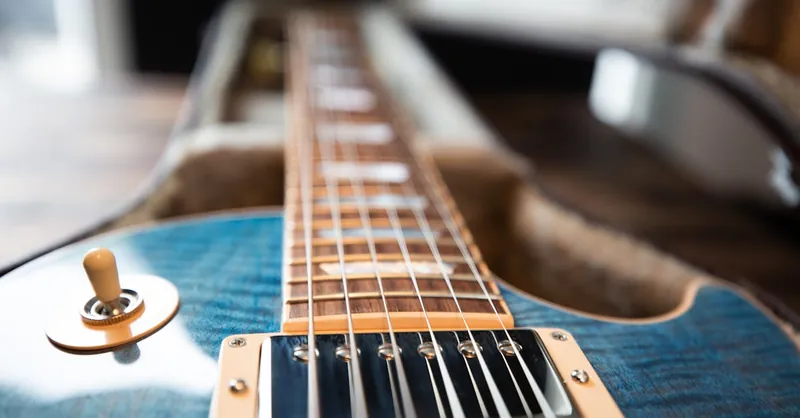
Image courtesy of Rene Terp
Practical Guitar Techniques to Play Substitutions
Understanding chord substitutions is just the beginning; applying them fluidly on guitar requires mastering the right chord voicings, fingerings, and voice leading techniques. These practical skills ensure your substitutions not only sound great but also fit naturally within your playing style and musical context.
Essential Chord Voicings for Substitutions
When substituting chords, choosing voicings that retain crucial chord tones—especially the third and seventh—maintains the harmonic identity while adding color. Here are some practical voicing tips:
- Use movable chord shapes: Dominant 7, minor 7, and major 7 chord shapes that can easily shift along the fretboard allow quick access to common substitutions like tritone substitutes or secondary dominants.
- Employ triads and partial chords: Sometimes playing triads on the top three strings or omitting the fifth can simplify complex substitutions, making transitions smoother and fingerings more accessible.
- Integrate chord extensions sparingly: Adding 9ths or 13ths to your substituted chords can enrich sound, but prioritize playability and clarity, especially when starting out.
Fingerings that Promote Smooth Transitions
Smooth voice leading depends heavily on economical finger movements and shared finger positions between chords. Here’s how to optimize your fingerings for substitutions:
- Anchor common tones: Identify chord tones that remain the same between original and substitute chords and keep your fingers on those notes to reduce motion.
- Minimize fretboard shifts: Whenever possible, choose fingerings that require small moves such as sliding or pivoting to the next chord shape.
- Practice chord change drills: Repeatedly switch between chords and their substitutes slowly, focusing on finger placement and timing to build muscle memory.
Voice Leading Examples on Guitar
Consider a classic ii–V–I progression in C major: Dm7 – G7 – Cmaj7. Applying substitutions can sound both natural and interesting with voice leading:
- Tritone substitution for V: Replace G7 with Db7. The key voice leading trick is the shared tritone interval (B–F in G7 and F–Cb[B] in Db7), which you can emphasize by keeping fingers on these notes as you switch.
- Relative minor substitution for I: Swap Cmaj7 with Am7. Because they share notes E and G, try to keep your fingers on these notes while changing only the bass or root note.
- Secondary dominant substitution for ii: Replace Dm7 with A7 leading to Dm7, emphasizing the voice movement from G in A7 down to F in Dm7 for a smooth stepwise motion on the top strings.
By focusing on voicings that highlight these shared chord tones and practicing fingerings that minimize movement, you can play chord substitutions effortlessly, enriching your rhythm playing and comping. Developing this tactile awareness on the guitar fretboard helps internalize harmony and creates a seamless musical flow that listeners and players alike will appreciate.
Incorporate these practical guitar techniques into your daily practice to make chord substitutions feel like a natural extension of your playing. Whether you’re strumming acoustic progressions or comping on electric guitar, mastering voicings, fingerings, and voice leading will dramatically elevate your ability to creatively reimagine chord progressions with confidence.
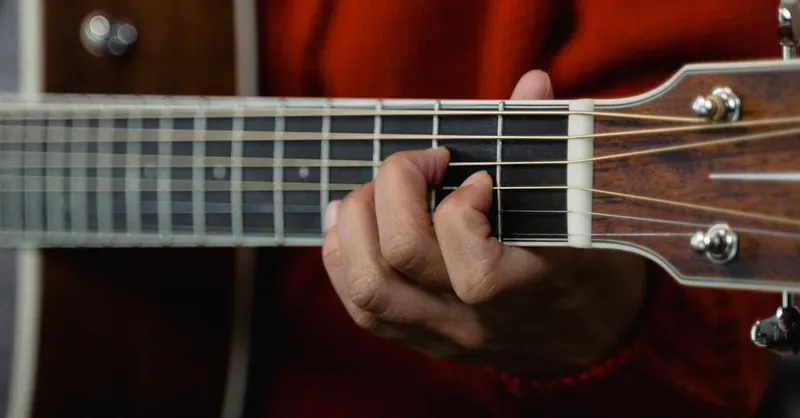
Image courtesy of Tima Miroshnichenko
Using Chord Substitutions to Enrich Your Songwriting and Improvisation
Incorporating chord substitutions into your songwriting and improvisation opens up a world of creative possibilities that can transform ordinary progressions into captivating musical stories. By thoughtfully replacing standard chords with substitutes that offer new harmonic colors and unexpected twists, you can add interest, depth, and emotional nuance to your compositions and solos.
Tips for Creative Use of Chord Substitutions
-
Enhance Emotional Expression:
Use substitutions to shift the mood subtly or dramatically without abandoning the song’s core harmony. For example, borrowing chords from parallel minor keys (modal interchange) or inserting tritone substitutions can introduce tension, melancholy, or jazzy sophistication that resonates emotionally with listeners. -
Add Fresh Harmonic Textures:
Experiment with secondary dominants or diatonic substitutes to break repetitive patterns. This keeps your progressions dynamic and engaging, especially in genres like pop, jazz, and blues where maintaining listener interest is key. -
Smooth Transitions in Improvisation:
When soloing, anticipate chord substitutions to create seamless melodic lines that flow naturally over changing harmonies. Recognizing and incorporating these twists helps you craft solos that sound intentional and polished rather than generic or predictable. -
Build Surprising Resolutions:
Use tritone substitutions or borrowed chords to create unexpected resolutions that capture attention. For example, replacing a dominant chord with its tritone substitute often leads to chromatic bass movement and a fresh auditory surprise that can be the highlight of a progression. -
Keep It Balanced:
While substitutions enrich your music, overusing them can confuse your audience or dilute your song’s identity. Use them strategically—to complement the original progression and highlight key moments rather than replacing every chord.
By integrating these tips and embracing chord substitutions in your songwriting and improvisation, you deepen your harmonic vocabulary and unleash greater expressive freedom on guitar and piano alike. This approach not only makes your music more compelling but also accelerates your growth as a versatile musician confident in reimagining harmony to suit any creative vision.

Image courtesy of Tima Miroshnichenko
Comparing Chord Substitutions on Guitar and Piano: Cross-Instrument Insights for Better Musical Understanding
Exploring chord substitutions through both guitar and piano offers a powerful synergy that deepens your overall music theory grasp and enhances your practical skills on each instrument. While guitar players often benefit from fretboard visuals and shape-based voicings, piano players enjoy a linear, horizontal layout of notes that clarifies chord structure and voice leading. Combining these perspectives builds a more holistic understanding of harmony that translates into more confident and creative playing.
How Piano Theory Supports Guitar Practice
-
Visualizing Chord Structures Clearly: On the piano, notes are laid out sequentially, making it easier to identify intervals, chord tones, and extensions within a chord substitution. This clarity helps guitarists better grasp why certain chords function well as substitutes, especially when translating complex chords like secondary dominants or tritone substitutes to the guitar fretboard.
-
Improved Voice Leading Awareness: Piano players can individually hear and control each voice within a chord, making voice leading and smooth transitions more intuitive. Guitarists studying piano voicings learn to appreciate the importance of common tones and minimal finger movement, which directly informs smarter, cleaner chord substitutions on guitar.
-
Expanded Harmonic Vocabulary: Many advanced chord voicings and extended chords are easier to conceptualize on piano. Exploring these on piano first enables guitarists to adapt these sounds to guitar-friendly voicings, enriching their substitution options beyond basic shapes and fostering creative exploration.
How Guitar Practice Enhances Piano Understanding
-
Fretboard Pattern Recognition: Guitarists develop strong pattern recognition skills through movable chord shapes and scale forms. Bringing this mindset to piano helps pianists see patterns and connections between chords, making understanding and applying substitutions less abstract and more systematic.
-
Rhythmic and Textural Insights: Guitar playing often emphasizes rhythm and strumming patterns alongside chord changes. This hands-on approach encourages pianists to think beyond straight chord strikes to incorporate rhythmic variation and texture when applying substitutions, improving the musicality of their accompaniment and improvisation.
-
Practical Application Mindset: Guitarists usually approach substitutions practically—focusing on which chords are playable and sound good within progressions. This pragmatic perspective helps pianists prioritize useful voicings and substitutions relevant to a song’s context, avoiding unnecessary complexity and encouraging musical expression.
In summary, leveraging the strengths of both piano and guitar theory and practice creates a richer, more intuitive understanding of chord substitutions. Guitarists who study piano chord structures and voice leading develop more informed substitution choices, while pianists gain fresh rhythmic and pattern-based insights from guitar techniques. Integrating these cross-instrument approaches not only accelerates your music theory learning but also cultivates versatile skills that enhance your creativity in songwriting, arranging, and improvisation across both instruments.
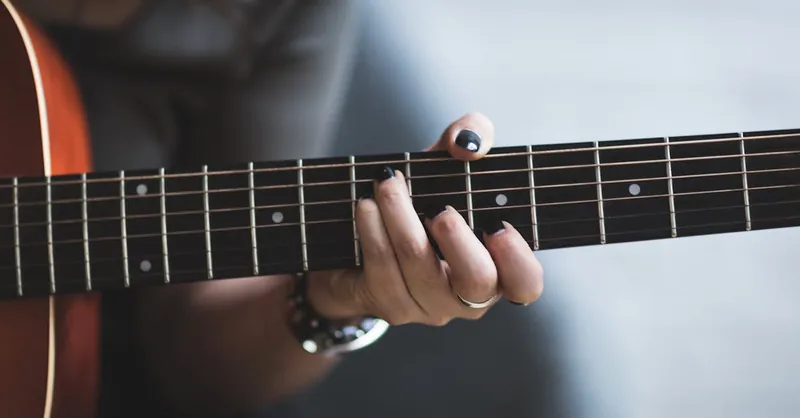
Image courtesy of Burst
Common Mistakes Beginners Make with Chord Substitutions and How to Avoid Them
When starting out with chord substitutions on guitar, it’s easy to get excited and experiment extensively—but certain pitfalls can disrupt your musicality and the natural flow of your progressions. Recognizing these common mistakes helps you maintain smooth sound transitions and ensures your substitutions enhance rather than confuse your playing.
1. Overusing Substitutions Without Purpose
Beginners often substitute too many chords at once, which can clutter the harmonic structure and confuse listeners. Effective chord substitution is about tasteful, intentional changes that support the song’s mood and progression rather than overwhelming it.
- How to avoid: Start by substituting one chord at a time within a progression and listen carefully to how it changes the feel. Build your substitution choices gradually to maintain clarity and coherence.
2. Ignoring Chord Function and Voice Leading
Replacing chords without understanding their harmonic function or neglecting smooth voice leading can result in jarring transitions and break the musical flow. Substitutions should maintain or elegantly alter the chord’s role within the key and preserve common tones for seamless movement.
- How to avoid: Always analyze what role a chord plays (tonic, dominant, subdominant) before substituting. Aim to keep at least one common tone between original and substitute chords to aid smooth finger shifts and bass line continuity.
3. Choosing Substitutions That Clash with the Melody
A chord substitution might sound theoretically correct but clash with the song’s melody if it contains notes that clash with the melodic line. This often happens when borrowing chords from parallel modes without considering melody compatibility.
- How to avoid: Sing or play the melody while testing substitutions. Ensure the key chord tones in your substitution support or complement the melody notes rather than create dissonance.
4. Using Complex Voicings Too Early
Jumping into advanced chord shapes or extended chords before mastering basic substitutions can cause frustration and technical difficulties, leading to sloppy execution and lost musical intent.
- How to avoid: Begin with simple chord voicings and partial chords that emphasize essential chord tones (root, third, seventh). Gradually add extensions and complex shapes as your dexterity and understanding improve.
5. Neglecting Context and Style
Not all substitutions work across musical genres or song styles. Applying jazzy tritone substitutions in a folk or pop context without stylistic matching might sound out of place.
- How to avoid: Consider the genre, tempo, and emotional tone of your piece. Choose substitutions that enhance the style and vibe, ensuring your harmonic choices serve the song rather than undermine it.
By being mindful of these common beginner mistakes and applying practical strategies to avoid them, you’ll preserve the musicality and flow of your chord progressions while confidently exploring the exciting world of chord substitutions on guitar. This thoughtful approach leads to more expressive, polished playing that genuinely connects with your listeners.

Image courtesy of Photo By: Kaboompics.com
Exercises and Practice Routines: Internalize Chord Substitutions on Guitar
To truly master chord substitutions on guitar, consistent practice with structured exercises is essential. Developing a disciplined routine helps internalize the theory and build the muscle memory required to smoothly apply substitutions in real musical contexts. Here are progressive exercises designed for beginners that progressively build your confidence and skill in recognizing and playing substitutes effectively.
1. Start with Diatonic Substitution Drills
- Choose a simple chord progression in a major key (e.g., C – F – G – C).
- Practice replacing each major chord with its relative minor (C → Am, F → Dm, G → Em) and vice versa.
- Strum the original progression, then repeat with one substitution at a time, listening closely to how the sound changes.
- Focus on minimizing finger movement by finding shared chord tones between original and substitute chords.
2. Integrate Secondary Dominants Gradually
- Select a common progression with ii–V–I chords (e.g., Dm7 – G7 – Cmaj7).
- Insert the corresponding secondary dominant before the target chord (e.g., play A7 before Dm7).
- Practice this substitution as a loop, paying attention to tension and resolution created by the dominant chords.
- Experiment with different voicings of dominant 7 chords for variety.
3. Practice Tritone Substitution with Voice Leading Focus
- Take a dominant chord (such as G7 in C major) and substitute it with its tritone counterpart (Db7).
- Focus on smooth voice leading by identifying common notes and maintaining them during chord changes.
- Play simple progressions alternating between the original dominant and its tritone substitute to hear the tonal contrast.
- Use metronome-backed practice to develop clean timing and fluid chord transitions.
4. Explore Modal Interchange with Borrowed Chords
- Pick a major key progression and incorporate borrowed chords from its parallel minor (e.g., substituting F with Fm in C major).
- Practice switching between diatonic and modal interchange chords slowly, focusing on tonal shifts and emotional impact.
- Sing or play melodies over these substitutions to ensure they complement the harmonic changes.
Tips for Effective Practice Routines
- Slow it down: Start all exercises at a slow tempo to prioritize accuracy and voice leading over speed.
- Loop and repeat: Use looping features on digital devices or looper pedals to isolate progressions and substitutions for extended practice.
- Record yourself: Listening back helps identify awkward transitions that need more refining.
- Apply in context: Take familiar songs and experiment replacing chords with learned substitutions to reinforce real-world application.
By following these step-by-step exercises and practice routines, you build a solid technique and aural awareness of chord substitutions on guitar. This gradual and focused approach ensures you internalize complex theory concepts and confidently apply them, making your playing richer, more expressive, and harmonically versatile.
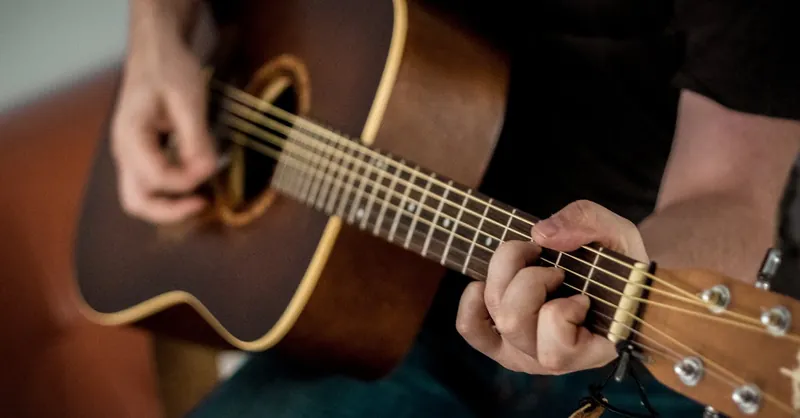
Image courtesy of 42 North
Resources and Tools for Further Learning: Recommended Books, Videos, and Apps for Chord Substitutions and Theory on Guitar and Piano
To deepen your understanding of chord substitutions and advance your skills on guitar and piano, exploring well-curated resources is essential. The right materials guide you through music theory concepts with clarity, demonstrate practical applications on your instruments, and provide interactive learning experiences that reinforce your progress. Below are some of the best books, video tutorials, and apps tailored specifically to chord substitutions and applied music theory for guitarists and pianists.
Recommended Books for Chord Substitutions and Music Theory
-
“The Jazz Theory Book” by Mark Levine
This comprehensive text is a goldmine for understanding advanced chord substitutions, including tritone subs and modal interchange. While jazz-oriented, the theory and concepts directly apply to guitar and piano, helping you internalize functional harmony and voice leading. -
“Chord Chemistry” by Ted Greene
Ideal for guitarists looking to explore chord voicings and substitutions in depth, this book breaks down complex chords into approachable fingerings with practical examples that expand harmonic vocabulary. -
“Harmony and Theory: A Comprehensive Source for All Musicians” by Mark Levine
A versatile resource that covers core theory topics, including scale-chord relationships and secondary dominants, it enables instrumentalists to apply substitutions creatively across genres. -
“Piano Chord Substitutions and Voicings” by Carl Humphries
Focused on piano technique, this book complements guitar study by providing clear visualizations of chord structures, making it easier to grasp substitution concepts and transfer them to the fretboard.
Top Video Tutorials and Online Courses
-
JustinGuitar’s Chord Substitution Series
Justin Sandercoe offers beginner-friendly videos that walk you through substitution types and fretboard application, perfect for guitarists who prefer step-by-step visual learning. -
Rick Beato’s Music Theory Videos on YouTube
Renowned for breaking down complex theory topics, Rick Beato’s videos cover chord functions, substitutions, and improvisation tips usable on both guitar and piano. -
PianoGroove’s Jazz Chord Substitution Lessons
For pianists venturing into jazz harmony, these lessons focus on common substitution techniques and integrating them into real playing situations, enhancing harmonic recognition.
Essential Apps to Practice Chord Substitutions on Guitar and Piano
-
iReal Pro
This popular app allows you to generate backing tracks and experiment with chord substitutions in real-time, developing your ability to hear and apply harmonic changes in context. -
Chordify
Chordify simplifies song chords and offers alternate voicing suggestions, helping guitar and piano players discover substitution options within their favorite music. -
Fretboard Hero
Specifically designed for guitarists, this app enhances fretboard knowledge and chord identification skills, which are critical for spotting substitution possibilities during playing. -
Tenuto
An interactive music theory trainer that strengthens your understanding of intervals, chord construction, and scale relationships to support intelligent chord substitution choices.
By incorporating these books, video tutorials, and apps into your learning routine, you accelerate your mastery of chord substitutions and deepen your overall music theory comprehension. Leveraging quality resources tailored to both guitar and piano ensures a balanced, practical approach that enriches your playing and composition with diverse harmonic tools.
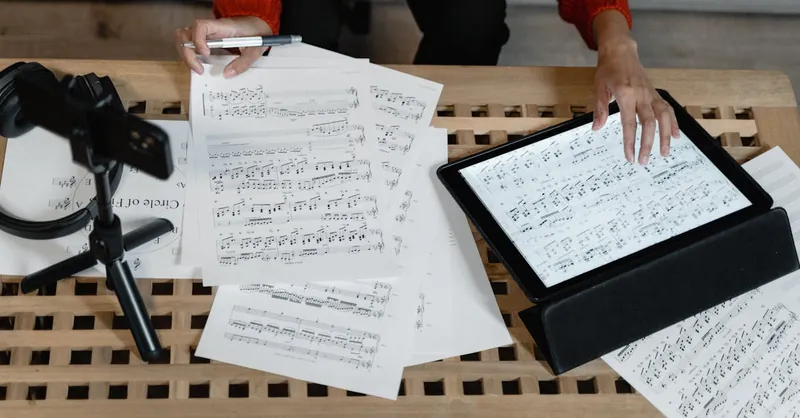
Image courtesy of Tima Miroshnichenko
